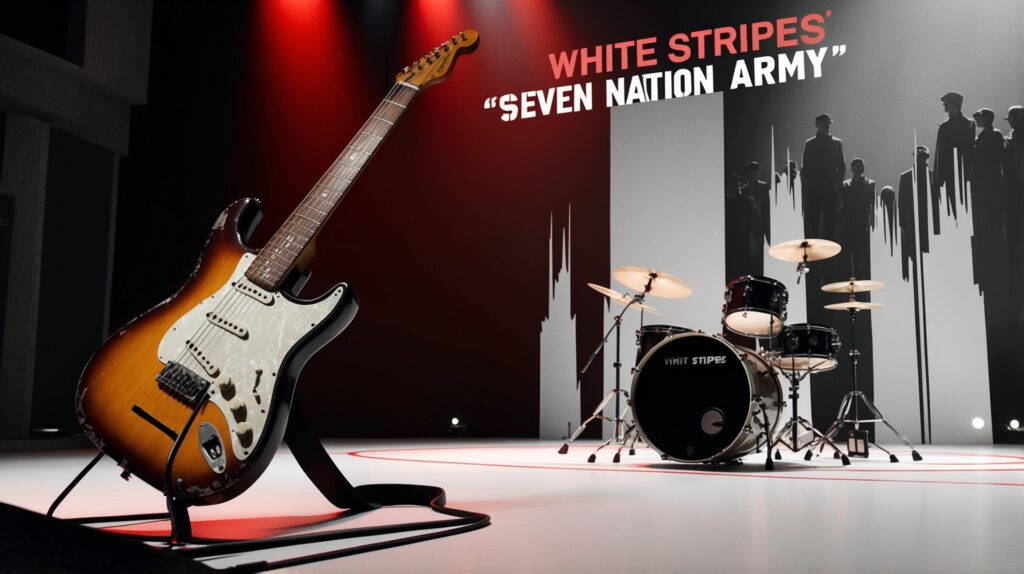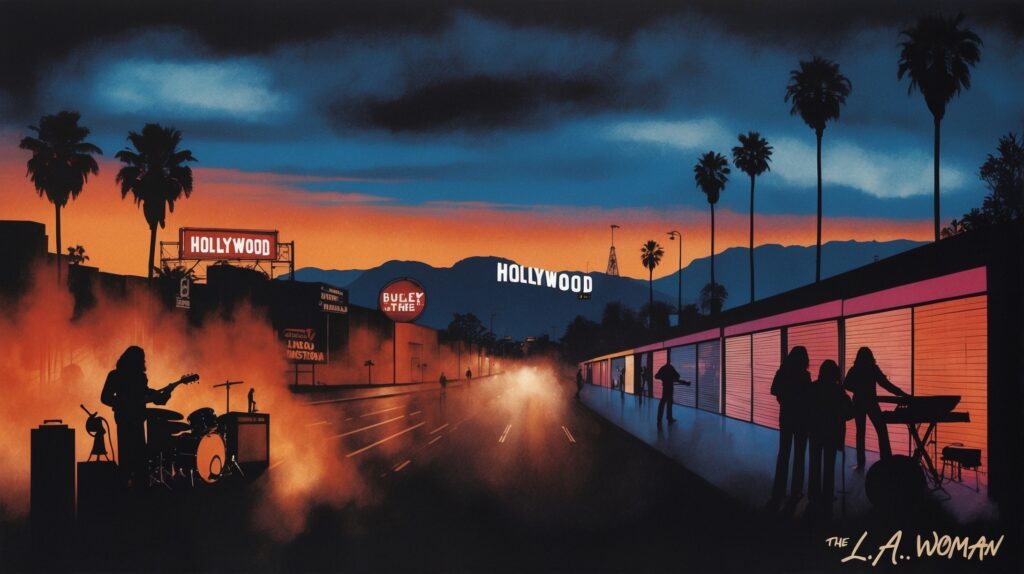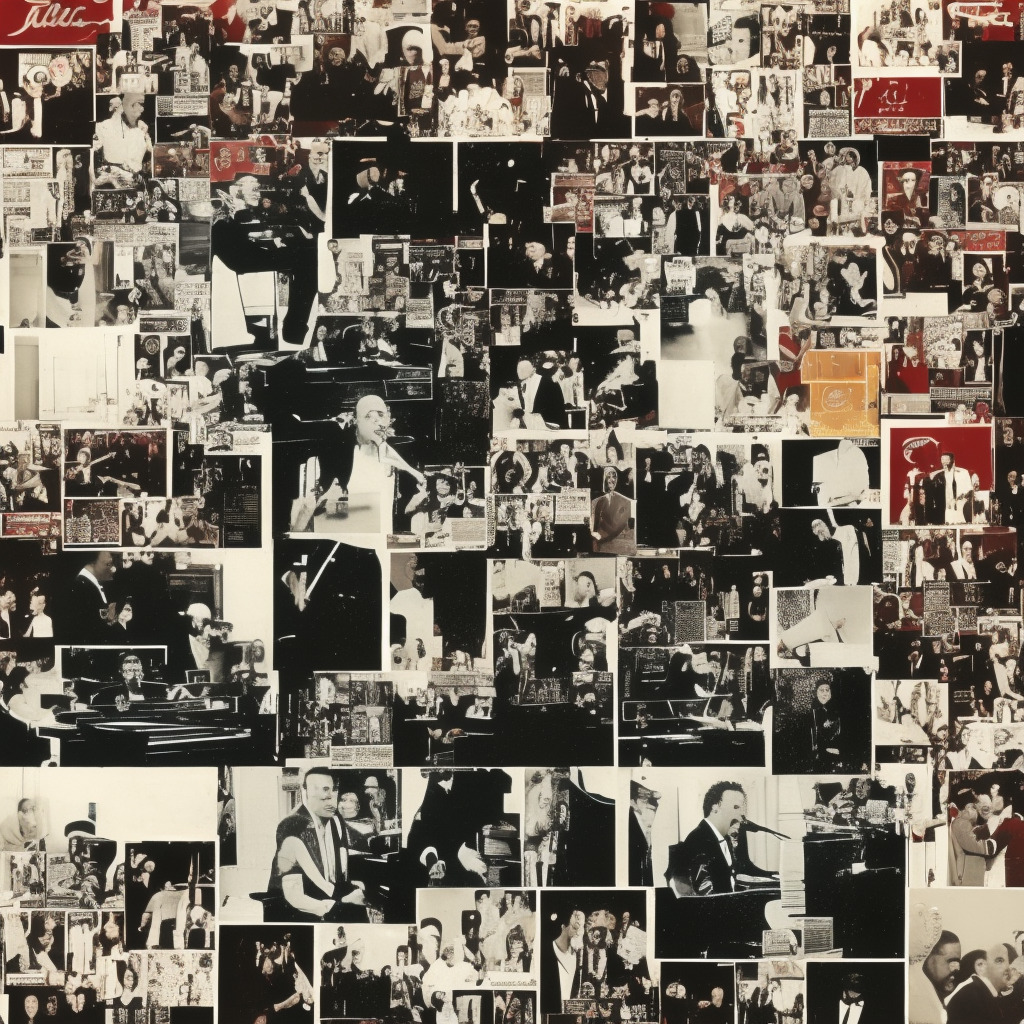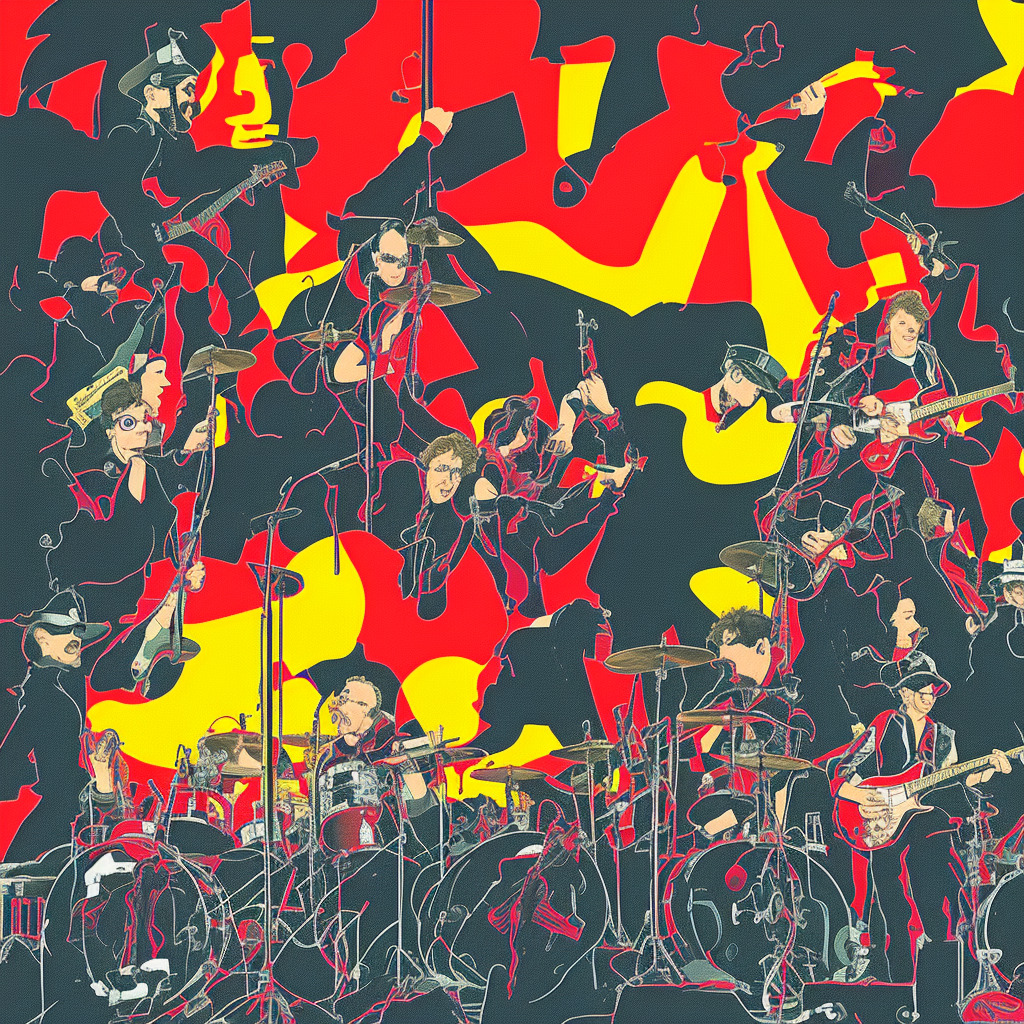The White Stripes: A Minimalist Duo with Maximum Impact
The White Stripes, a ground-breaking duo, transformed the landscape of rock with their minimalist yet impactful sound. Their iconic hit, “Seven Nation Army,” cemented their status as pioneers in the 2000s garage rock revival.

The White Stripes emerged as a trailblazing force in the alternative rock scene, characterized by their minimalist sound and highly distinctive style. Formed in Detroit in 1997, the band was fronted by Jack White and drummer Meg White, whose raw and powerful musical approach captured the attention of both critics and audiences alike. Their breakout hit, “Seven Nation Army,” was not only a cornerstone in their career but also a defining moment for rock music in the early 2000s. This song highlighted their creativity and ability to create dense soundscapes with just a two-member lineup, showcasing a simple yet heavily infectious guitar riff that has since become iconic.
Jack White, born John Anthony Gillis, honed his craft early in life, exploring various facets of music and art before founding The White Stripes. Known for his innovative guitar techniques and eclectic music taste, Jack’s artistry was shaped by a diverse background steeped in blues, garage rock, and punk influences. Meg White, on the other hand, brought an elemental drumming style to the table, heavily defined by straightforward, primal beats that contrasted yet perfectly complemented Jack’s intricate guitar work. This combination of styles formed the heart of the duo’s sound and played a pivotal role in distinguishing their music from contemporaries.
Released in 2003 as part of their fourth studio album, “Elephant,” “Seven Nation Army” marked a new chapter in The White Stripes’ musical journey. At a time when the music scene was saturated with synthesized sounds and digital production, their analog approach offered a refreshing return to basics. The song gained immediate acclaim for its innovative use of slide guitar and minimalist percussion. Furthermore, the era around its release was defined by the duo’s rise to international fame, spearheading a garage rock revival that would influence countless bands and artists in subsequent years.
Jack White: The Mastermind Behind ‘Seven Nation Army’
Explore the profound impact of Jack White, the mastermind behind ‘Seven Nation Army,’ and how his eclectic musical influences and instinctive artistry crafted an iconic anthem.

Jack White, the celebrated composer of ‘Seven Nation Army,’ is a multifaceted musician known for his unique contributions to the rock and blues genres. Born John Anthony Gillis on July 9, 1975, in Detroit, Michigan, White’s musical journey began in his youth, playing the drums in a local band. White’s diverse musical background and self-taught musicianship set the foundation for his eclectic style, which blends elements of garage rock, punk, and blues.
White’s musical style is heavily influenced by his deep admiration for the blues, including legends such as Son House and Blind Willie McTell. His compositions often feature minimalistic arrangements, raw energy, and a focus on storytelling through sound. With ‘Seven Nation Army,’ White employed the pentatonic scale, a staple of blues music, creating an iconic riff that has cemented the song’s place in rock history.
As a composer, White’s role in the creation of ‘Seven Nation Army’ was pivotal. Not only did he craft its unforgettable guitar riff, but he also penned the lyrics, which blend seamlessly with the music’s anthemic quality. White has often mentioned in interviews that the riff came to him spontaneously during soundchecks, showcasing his creative spontaneity and instinctive musical prowess. This blend of calculated composition and instinctive artistry has been a hallmark of Jack White’s work, contributing significantly to the song’s worldwide acclaim and ensuring its enduring legacy in the annals of rock music.
From Prestigious Awards to Iconic Covers: The Lasting Imprint of ‘Seven Nation Army’
A remarkable journey of awards and covers: From Grammy awards to sports arenas, “Seven Nation Army” echoes through diverse media, celebrated by fans and artists alike.

“Seven Nation Army” by The White Stripes stands as a monumental piece of rock history, celebrated for its irresistible riff and pervasive influence across multiple media platforms. Since its release, the song has accumulated numerous awards and nominations, cementing its status in the pantheon of rock classics. A landmark achievement came in 2004 when the song won a prestigious Grammy Award for Best Rock Song, a testament to its widespread acclaim and enduring appeal. Additionally, it has been consistently ranked among the greatest songs of the 21st century by various music publications, further validating its cultural impact.
Given its powerful hook and compelling message, “Seven Nation Army” has inspired numerous artists to create their own renditions. One of the most notable covers is by the band Audioslave, who infused the song with their own unique sound during live performances. Another prominent version comes from Ben l’Oncle Soul, a French soul singer, who reimagined the track with a soulful twist, broadening the song’s reach to new audiences. Through these diverse covers, the song continues to find fresh interpretations, indicating its versatile and timeless nature.
The influence of “Seven Nation Army” extends far beyond the realm of music into television, film, and even sports. Its iconic riff has become ubiquitous in sports arenas worldwide, often serving as an anthemic chant among fans, especially in European football matches. The song has also been featured in numerous films and television series, enhancing its reputation as a cultural touchstone that resonates with audiences across different mediums.
Chart-Topping Triumph: The Success Journey of ‘Seven Nation Army’
Explore the chart-breaking success of ‘Seven Nation Army’ by The White Stripes, a pivotal track that soared to international acclaim and became a cultural powerhouse.
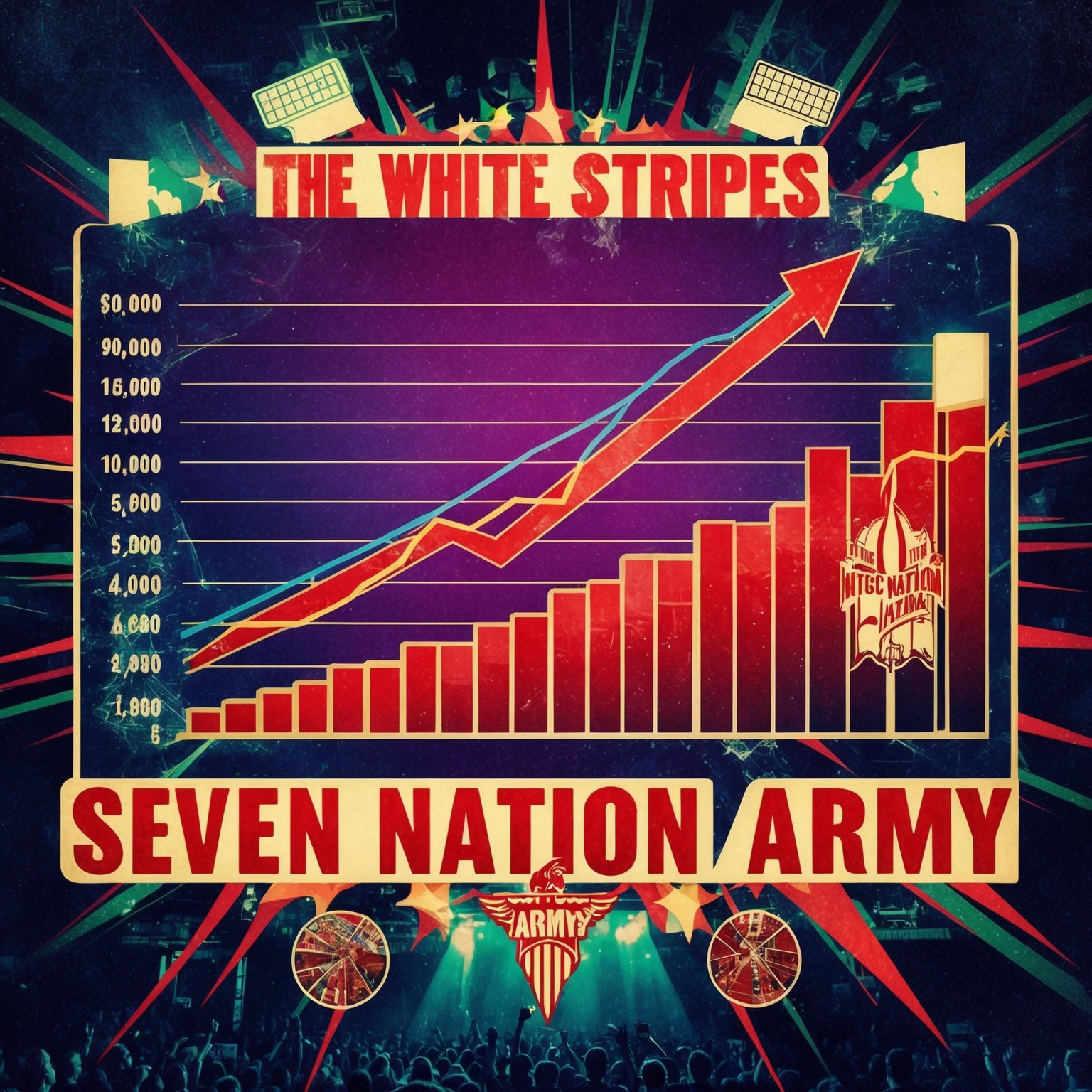
When ‘Seven Nation Army’ hit the music scene in March 2003, it quickly proved to be more than just another release by The White Stripes. Initially debuting modestly, the song gained momentum, capturing the ears and imaginations of listeners worldwide. Within weeks, it had climbed into the charts, eventually peaking at number one on the Polish Singles Chart and making significant impressions on several other international charts, including reaching number seven in the UK Singles Chart. Its infectious guitar riff and compelling lyrics made it stand out from other tracks of the time, cementing its place as a hallmark of early 2000s rock music.
In comparison to their previous work, ‘Seven Nation Army’ marked a breakthrough moment for The White Stripes, particularly in non-English-speaking countries, achieving notable chart success in Italy, Belgium, and Germany. It solidified the band’s status and influence in the rock genre, surpassing the commercial performance of earlier hits from their discography like ‘Fell in Love with a Girl’. The song’s popularity proved pivotal, broadening their audience and aligning traditional rock elements with modern musical sensibilities.
Much of the song’s success can be attributed to the strategic marketing efforts employed by the band’s label, Third Man Records, in collaboration with V2 Records. They effectively utilized the rising influence of music videos and powerful live performances to boost the track’s visibility. The song’s iconic riff and charismatic appeal also caught the attention of sports arenas, further establishing its cultural footprint as it became an anthem echoed by fans at various sporting events around the globe—most notably within European soccer stadiums, contributing to its enduring legacy. The White Stripes capitalized on this momentum, transitioning to larger tours and increased merchandise sales, reinforcing their economic base and industry presence.
Visually Striking: The Music Video That Amplified the Anthem
The music video for ‘Seven Nation Army’ by The White Stripes, directed by Alex and Martin, features a mesmerizing vortex of visuals that enhances the song’s iconic guitar riff. Its innovative concept and distinct color scheme boosted the song’s popularity worldwide.

The music video for “Seven Nation Army” by The White Stripes is an unforgettable fusion of visual and auditory art that has become as iconic as the song itself. Directed by the acclaimed British director Alex and Martin, known for their innovative and striking imagery, the video unravels like a constantly shifting spiral, enhanced by kaleidoscopic motifs and hypnotic patterns. These visual elements perfectly complement the song’s haunting guitar riff, creating an enthralling synergy that grips the viewer’s attention from start to finish. The video is a brilliant exploration of symmetry and repetition, using a recurring visual motif of red, white, and black colors, which are synonymous with the band’s aesthetic.
Beyond its captivating visuals, the music video is credited with boosting the song’s popularity across global audiences. The striking imagery combined with the powerful song left a lasting impression, turning both into instant anthems in popular culture. This bold visual style mirrored the raw energy and simplicity of the duo’s musical approach, enhancing the mysterious allure of the song. The music video became a staple on music television channels and was widely praised for its creativity, thereby reaching and engaging a broader audience.
Despite its simplicity, the music video received critical acclaim for its innovative concept and execution. While there are no celebrity cameos, the video’s distinctive style and adherence to The White Stripes’ iconic color scheme meant it was instantly recognizable. The seamless blending of art and music not only symbolized the band’s unique identity but also set a high bar for music videos in the 2000s. In retrospect, the “Seven Nation Army” music video stands as a testament to how a powerful visual narrative can enhance and even extend the impact of a single rock anthem.
Deciphering the Musical Genius of ‘Seven Nation Army’
Unveiling the structured brilliance of Jack White’s “Seven Nation Army,” this section dissects its musical composition, revealing its key of E minor, iconic riff, and simple yet powerful harmony. Discover how the song’s unique soundscape and studio anecdotes place it as a pivotal part of The White Stripes’ evolution.

At the heart of The White Stripes’ anthem “Seven Nation Army” is a deceptively simple yet ingeniously crafted musical structure. The song is written in the key of E minor, a choice that contributes to its dark, driving energy. This is a departure from the major keys more commonly heard in mainstream rock, lending the piece a distinctively moody atmosphere. The song’s tempo hovers around 124 BPM, a mid-tempo pace that gives it that unforgettable, marching groove.
The song begins with its iconic guitar riff played by Jack White, who uses a semi-acoustic, 1950s Kay Hollowbody guitar. The riff is continuously reinforced throughout the song, providing a unifying backbone to the structure. This clever use of repetition is not only catchy but also easy for listeners to latch onto, making it an earworm of epic proportions.
When it comes to melody, harmony, and rhythm, “Seven Nation Army” is a masterclass in minimalist rock music. The melody, largely dictated by the riff, stays simple yet powerful. There is nominal harmonic complexity, with the verses sticking to two primary chords: E and G. This simplicity channels attention straight to the raw vocal delivery, while Meg White’s drumming provides a steady, unchanging beat that complements the song’s relentless feel.
Instrumentation is critical to the unique sound of “Seven Nation Army.” The main instruments are Jack White’s distorted guitar and Meg White’s straightforward percussion. Remarkably, the guitar riff is fed through a pitch shift to emulate the sound of a bass—a testament to the song’s innovative nature in achieving a fuller sound without a conventional bass guitar.
In the context of The White Stripes’ discography, “Seven Nation Army” signifies a pivotal point in their musical journey. Compared to earlier works like “Fell In Love With A Girl,” the song unfolds a broader, more mature sound landscape, both musically and thematically. This evolution emphasizes their growing comfort with experimentation while still adhering to their energetic garage rock roots.
Interesting tidbits about the song’s recording include its production at Toe Rag Studios in London, a location known for its vintage gear and analog recording techniques. Produced by Jack White and Liam Watson, the environment fostered a raw, authentic sound that perfectly encapsulates the essence of The White Stripes. An anecdote worth mentioning is Jack White’s initial uncertainty about the song’s potential—he once believed it wasn’t strong enough to release as a single. Fortunately, he was convinced otherwise, and “Seven Nation Army” became not just a defining track for the band, but also a key element of rock music’s early 2000s tapestry.
Exploring the Depth and Resilience in ‘Seven Nation Army’
Delve into the introspective and defiant lyrical world of ‘Seven Nation Army.’ Discover its themes of resilience and internal struggle, enriched by masterful metaphors and emotional depth.
A seven nation army couldn’t hold me back
They’re gonna rip it off
Taking their time right behind my back
And I’m talking to myself at night
Because I can’t forget
Back and forth through my mind
Behind a cigarette
And a message coming from my eyes says leave it alone
…
******* This Lyrics is NOT for Commercial use *******
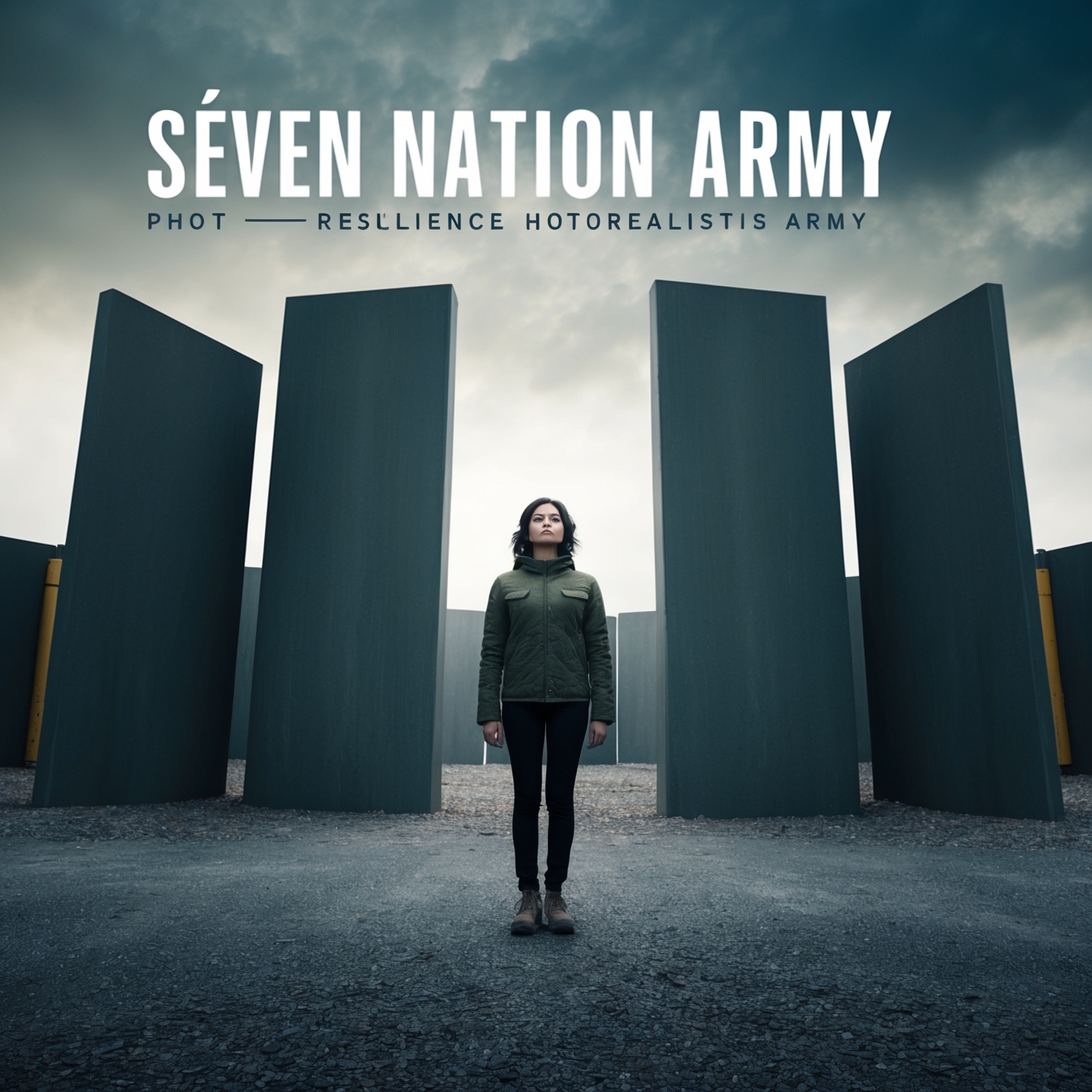 Seven Nation Army, a powerful anthem by The White Stripes, is laden with evocative themes and rich symbolism, capturing the essence of defiance and inner struggle. The lyrics reflect an individual battling against overwhelming odds, determined not to back down. This theme of unwavering resilience resonates deeply with listeners, exemplifying a universal human experience. The audacious claim that ‘a seven nation army couldn’t hold me back’ paints a picture of sheer resolve and determination, marking a vivid beginning that hooks the audience. The narrative style of the song is uniquely introspective. Written in the first person, it allows listeners to delve into the protagonist’s mind, exploring their fears and ambitions. The recurring motif of self-dialogue (‘And I’m talking to myself at night’) adds to this introspection. This narrative approach effectively draws the audience into the internal conflict, making it relatable and engaging. When examining the lyrical devices, the song is a masterclass in metaphor and symbolism. The repeated imagery of ‘a seven nation army’ serves as a metaphor for insurmountable challenges and opposition. The vivid mental imagery (‘Behind a cigarette’) further enhances the song’s compelling nature, inviting different interpretations. Additionally, the straightforward yet potent language ensures that the lyrics hit home, their simplicity contributing to the broader audience appeal. Comparing the lyrics of Seven Nation Army to other works by The White Stripes, it’s fascinating to note a recurrent theme of introspection and resistance. This song stands out because of its anthemic quality, making it a staple in sports arenas and protests alike. It embodies a cultural zeitgeist, symbolizing personal and social defiance. Its lyrical connection to broader art forms, arguably influenced by literature and poetry, is evident in its storytelling technique and metaphorical depth. The emotional impact of the song’s lyrics is profound, crafting a sense of empowerment among listeners. The lyrics evoke feelings of determination, frustration, and eventual triumph. This emotional resonance contributes significantly to the song’s enduring popularity, ensuring its place in the collective cultural memory. Through its expertly crafted metaphors and gripping narrative, Seven Nation Army succeeds in creating a poignant and universally relatable message.
Seven Nation Army, a powerful anthem by The White Stripes, is laden with evocative themes and rich symbolism, capturing the essence of defiance and inner struggle. The lyrics reflect an individual battling against overwhelming odds, determined not to back down. This theme of unwavering resilience resonates deeply with listeners, exemplifying a universal human experience. The audacious claim that ‘a seven nation army couldn’t hold me back’ paints a picture of sheer resolve and determination, marking a vivid beginning that hooks the audience. The narrative style of the song is uniquely introspective. Written in the first person, it allows listeners to delve into the protagonist’s mind, exploring their fears and ambitions. The recurring motif of self-dialogue (‘And I’m talking to myself at night’) adds to this introspection. This narrative approach effectively draws the audience into the internal conflict, making it relatable and engaging. When examining the lyrical devices, the song is a masterclass in metaphor and symbolism. The repeated imagery of ‘a seven nation army’ serves as a metaphor for insurmountable challenges and opposition. The vivid mental imagery (‘Behind a cigarette’) further enhances the song’s compelling nature, inviting different interpretations. Additionally, the straightforward yet potent language ensures that the lyrics hit home, their simplicity contributing to the broader audience appeal. Comparing the lyrics of Seven Nation Army to other works by The White Stripes, it’s fascinating to note a recurrent theme of introspection and resistance. This song stands out because of its anthemic quality, making it a staple in sports arenas and protests alike. It embodies a cultural zeitgeist, symbolizing personal and social defiance. Its lyrical connection to broader art forms, arguably influenced by literature and poetry, is evident in its storytelling technique and metaphorical depth. The emotional impact of the song’s lyrics is profound, crafting a sense of empowerment among listeners. The lyrics evoke feelings of determination, frustration, and eventual triumph. This emotional resonance contributes significantly to the song’s enduring popularity, ensuring its place in the collective cultural memory. Through its expertly crafted metaphors and gripping narrative, Seven Nation Army succeeds in creating a poignant and universally relatable message.
Did you know the iconic riff of Seven Nation Army was inspired by a simple soundcheck? 🎸 Jack White’s spontaneity birthed a rock legend! #SevenNationArmy #FunFact #RockHistory https://bit.ly/4exHYyA
Click to Tweet

